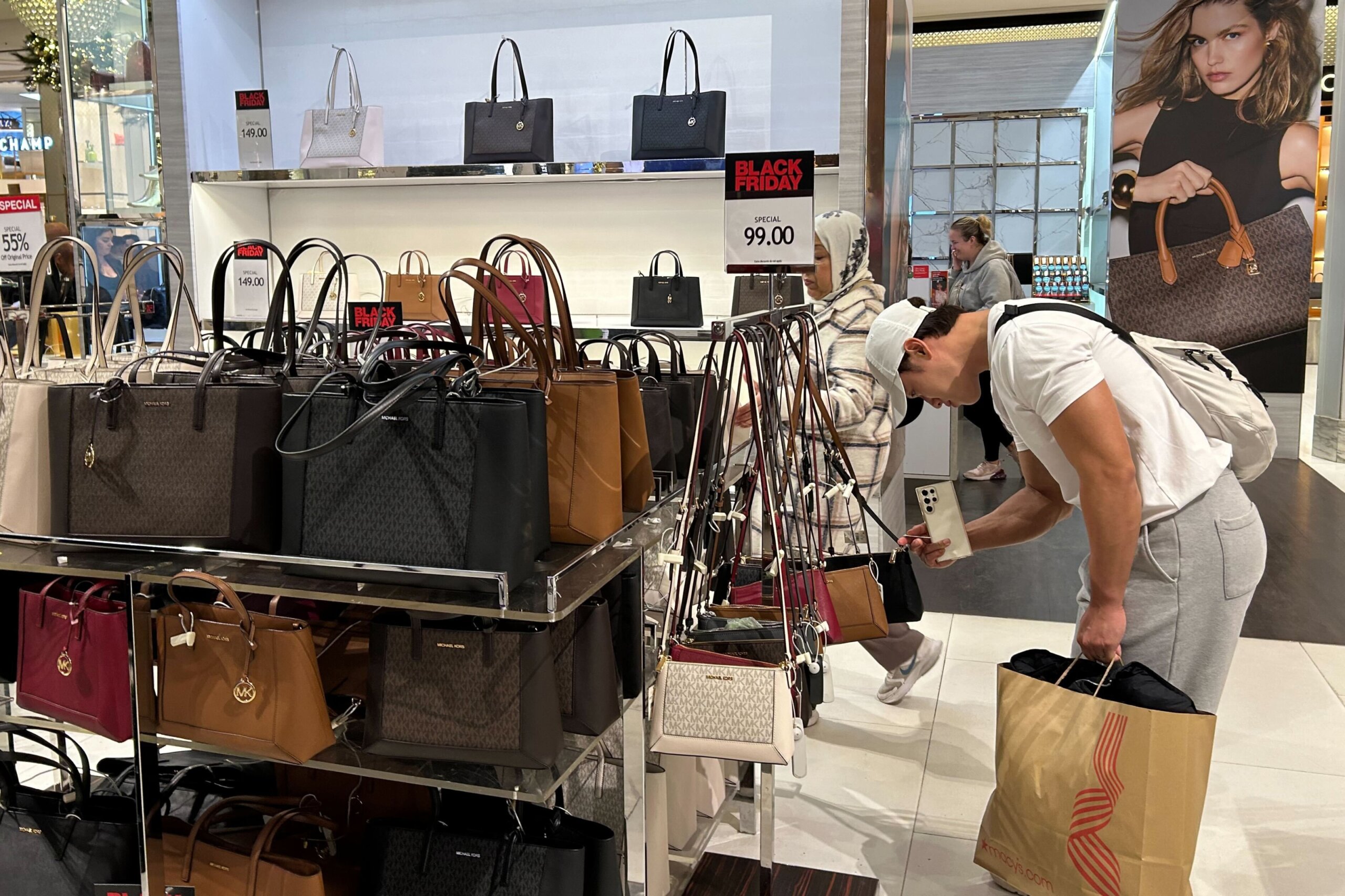Americans stepped up their spending at retail stores and restaurants last month in a clear sign that consumers are still…
Americans stepped up their spending at retail stores and restaurants last month in a clear sign that consumers are still able and willing to shop.
Retail sales rose 0.4% in December from the previous month, the Commerce Department said Thursday, though down from November’s upwardly revised 0.8% gain.
The figures suggest that even as many Americans are struggling with higher prices and elevated interest rates, a low unemployment rate and rising wages are encouraging millions of consumers to spend, bolstering economic growth. Last Friday the government reported that employers stepped up hiring in December and the unemployment rate fell to a low 4.1%.
Last month’s sales growth was below economists’ projections, “but this was actually a strong report,” said Paul Ashworth, chief North American economist at Capital Economics. The sales figure was held down by a sharp drop at building materials stores and a small decline at restaurants. Otherwise, most types of retailers reported solid gains.
Ashworth now expects the economy expanded at a healthy annual rate of 2.9% in the final three months of last year, up from his previous estimate of 2.7%.
Retailers have generally reported healthy sales during the winter holiday shopping season. Much of last month’s increase in spending was driven by a 0.7% jump in car sales, and a 2.3% spike in purchases of furniture. Sales at sporting goods stores jumped 2.6%, while clothing outlets reported a 1.5% increase.
The report isn’t adjusted for inflation, which picked up last month. The retail sales report mostly reflects sales of goods, where prices have been relatively muted. Sales rose 3.9% in December compared with a year ago, the government said, while goods prices have risen just 0.3%.
After dropping precipitously in 2023, inflation has been stuck at about 2.7% in recent months, and prices are still much higher than four years ago. Still, on Wednesday the Labor Department said that core prices — excluding the volatile food and energy categories — rose more slowly last month, as clothing prices barely increases and apartment rental costs climbed at a slower pace.
The cooler core inflation figures renewed hopes among economists and Wall Street investors that the Federal Reserve will cut its key rate further this year, after three reductions last year reduced by a percentage point to about 4.3%.
The retail sales report came out as thousands of retail executives gathered for the National Retail Federation’s annual conference this week in New York to discuss issues ranging from continued shopper caution to artificial intelligence to the specter of tariffs.
The conference came on the heels of a solid holiday shopping season, though consumers remain bifurcated. Wealthier shoppers, boosted by rising home values and stock investments, continue to spend more, but lower-income shoppers, their wallets strained by still high inflation, have pulled back.
“Families at the higher end of the income spectrum are doing more than their fair share of consumer spending and remodeling,” Greg Daco, chief economist at EY-Parthenon, Ernst & Young LLP said Monday. “Maybe they’re not moving, but they’re remodeling and they’re buying. Families at the lower end of the spectrum are a little bit more constrained and have more difficulties with this high price environment.”
Shoppers have been more sensitive to deals, though analysts say they weren’t more prevalent during this holiday season than last year. Such promotions are expected to continue in 2025. For example, Whole Foods Market, which marked down more than 25% of the items it sold last year, said that it may expand that number this year. Such discounts have helped the grocery retailer bring in new customers who were shopping elsewhere, executives said.
“I always say to my merchants, ‘I want every single customer who walks in our door to find something that works within their budget and every category where we run our business,’” said Sonya Gafsi Oblisk, chief merchandising and marketing officer at Whole Foods, during an interview with The Associated Press on Monday.
Retailers are also trying to figure out how to prepare for Trump’s new layer of tariffs, though details of the plan are still unknown. Walmart and Best Buy executives have already warned they may have to pass on higher costs to shoppers at a time when many consumers have pushed back on higher price tags.
Tony Spring, CEO of Macy’s Inc., said at the NRF conference that back in 2016 and 2017, when Trump threatened to impose tariffs, the company had to do more diversification of sourcing of its store label brand and worked with its partners to understand how they were thinking about production. He added that the retailer is having the same conversations again.
“This isn’t our first rodeo.” But he added, “We want to be able to be a good trading partner with the rest of the world. At the same time, we want it to be a fair relationship.”
___
D’Innocenzio reported from New York.
Copyright
© 2025 The Associated Press. All rights reserved. This material may not be published, broadcast, written or redistributed.

